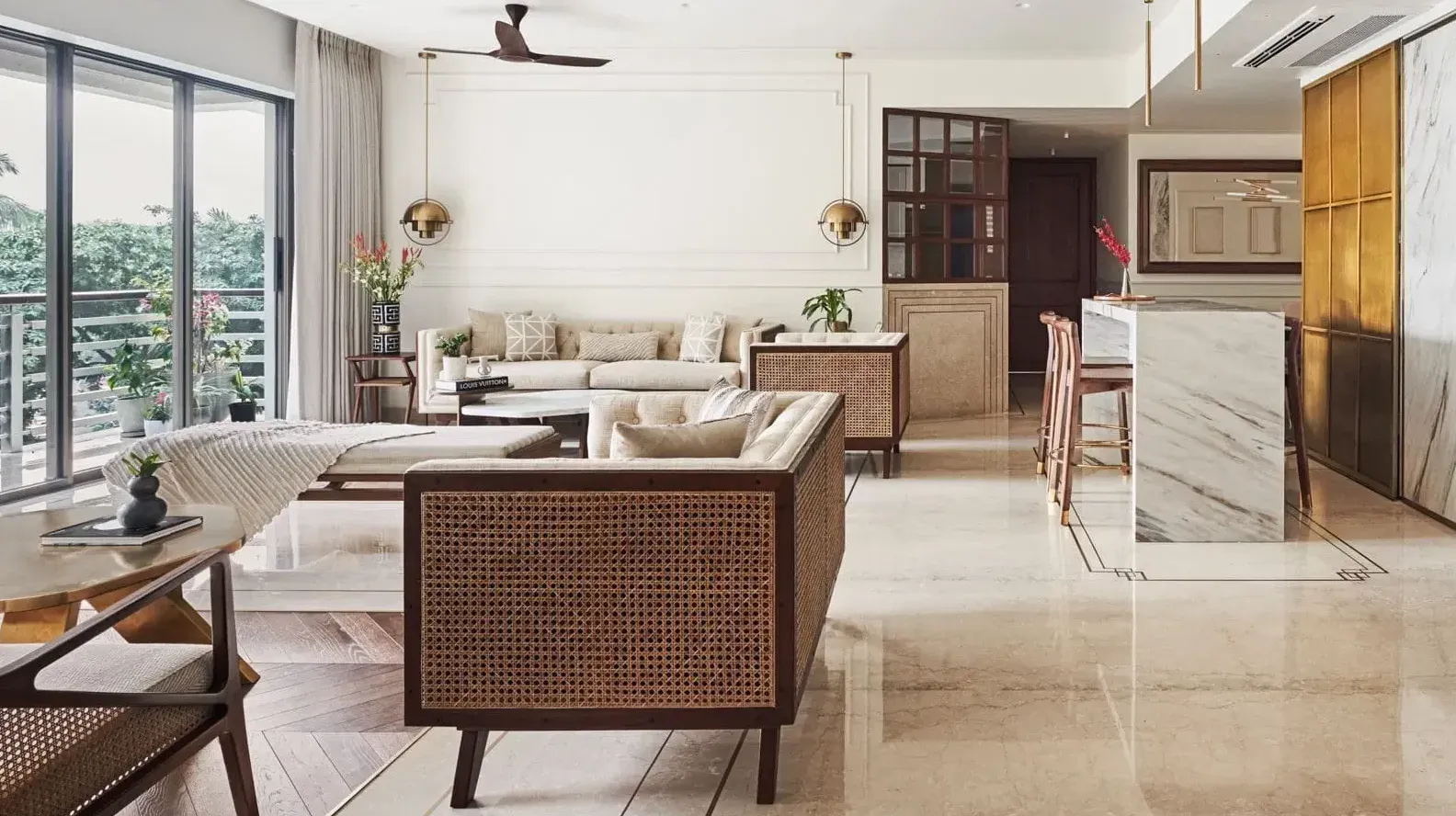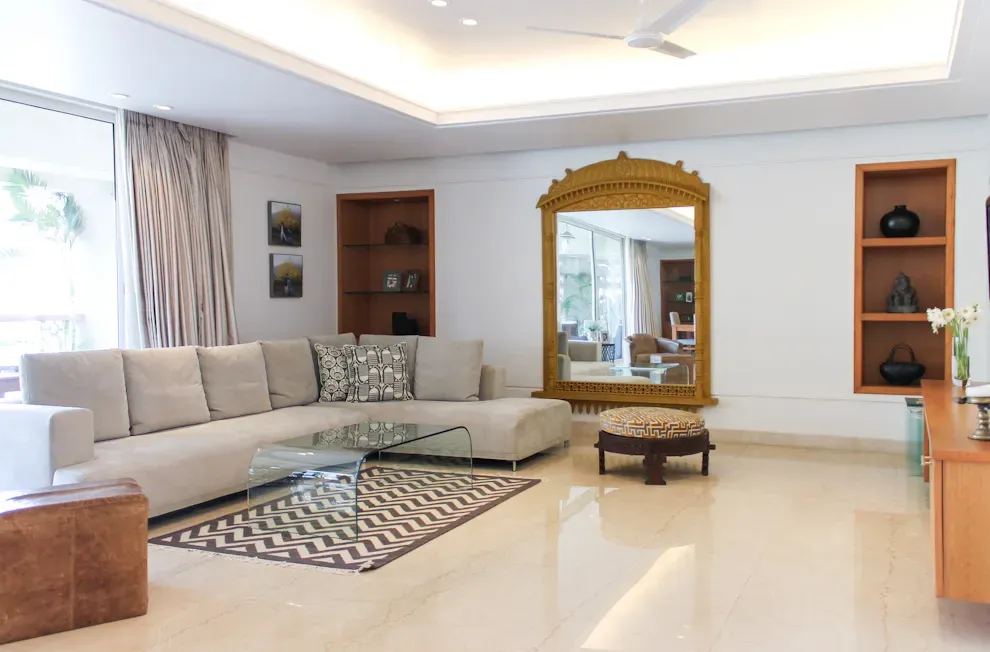The "Minimalist" Home for the Indian Family: Is It Practical?

By
Shrusti Naik
Posted on August 25, 2025. 10 mins

The "Minimalist" Home for the Indian Family: Is It Practical?
Introduction

Minimalism has emerged as a global lifestyle trend, celebrated for its emphasis on “less is more.” From sleek Scandinavian interiors to Japanese-inspired decluttering, the idea of living with fewer possessions and simpler spaces has gained traction worldwide. In India, however, the concept of a “minimalist home” intersects with cultural, economic, and familial realities that are far more layered. Can an Indian family, often multigenerational, space-conscious, and value-driven, adopt a minimalist lifestyle without compromising comfort, tradition, or practicality?
With India’s real estate market projected to reach USD 1.3 trillion by 2034, urban households are increasingly questioning not just affordability but also the efficiency of their living spaces. The rising cost of housing in metros, the shrinking average apartment size, and the clutter of consumerism have sparked a growing interest in minimalism. But is it a genuine solution for Indian families, or an aspirational trend imported from the West?
Minimalism Meets Indian Living: A Cultural Dilemma
Minimalism, at its core, is about reducing excess. In India, however, homes are not just private spaces—they are cultural and social hubs. A typical family living in Mumbai, Delhi, or Bengaluru often accommodates parents, children, and sometimes grandparents under the same roof. Festivals, rituals, and frequent gatherings demand storage for traditional clothes, utensils, décor, and religious items. Unlike Western households, where minimalism often thrives in nuclear living, Indian families face the challenge of balancing functional needs with emotional and cultural attachments.
Consider Diwali: families bring out ornate dinner sets, diyas, puja samagri, and decorative lights, items stored away for much of the year but integral to cultural identity. Can minimalism coexist with such traditions? Perhaps the answer lies not in cutting out, but in curating thoughtfully, keeping what is meaningful while eliminating what is merely habitual consumption. Might as well take a look at The Resurgence of Traditional Indian Architectural Elements in Modern Homes.
The Economics of Space: Why Smaller Homes Push Minimalism
Over the past decade, the average size of apartments in top Indian metros has declined significantly. According to Anarock Research (2024), the average apartment size in Mumbai Metropolitan Region (MMR) has shrunk from 960 sq. ft. in 2014 to about 720 sq. ft. in 2024. With real estate prices consistently rising (Source: Economic Times, April 2025), families are being forced to reconsider how much space they actually need versus how much they can afford.
This shrinking square footage naturally encourages minimalism. Smaller homes leave little room for excessive furniture, redundant appliances, or bulky storage. For younger professionals and small families, minimalism is not just a lifestyle choice but a financial necessity. By prioritizing multifunctional furniture, modular kitchens, and smart storage, many urban households are finding ways to maximize comfort within limited space. With all this, here is another way to enhance your home by Choosing the Right Color Palette for Each Room
Psychological Well-Being and Minimalist Spaces
Minimalism is often linked to mental clarity and reduced stress. In a country like India, where urban chaos—from long commutes to constant digital noise—adds to daily pressure, the idea of a serene, clutter-free home is appealing. Research on environmental psychology suggests that a well-organized, decluttered home can improve focus and emotional well-being (Source: Mint, January 2025).
For Indian families, this becomes even more significant. With hybrid work models gaining permanence, the home is no longer just a place of rest, it’s also a workplace and sometimes even a classroom. A minimalist environment, with defined zones and reduced clutter, can help family members navigate these overlapping functions more harmoniously. Besides. here are some Design Choices That Can Actually Increase Your Property Value
The Practical Barriers: Storage, Sentiment, and Social Status
Despite its benefits, minimalism in Indian households faces three practical hurdles:
-
Storage Needs – From wedding sarees to heirloom crockery, Indian families accumulate possessions that carry both financial and sentimental value. Unlike in the West, where second-hand markets are robust, Indian households often “hold on” instead of discarding.
-
Emotional Attachments – Objects in Indian homes often symbolize memories, rituals, or blessings. Giving away a wooden swing or a grandmother’s cupboard is not simply decluttering—it feels like erasing heritage.
-
Social Signaling – In many communities, homes reflect social status. A “bare” home can be misinterpreted as lack of prosperity, even if it is intentionally minimalist. This cultural lens complicates the adoption of a pared-down aesthetic.
Thus, the practicality of minimalism often varies by generation. While younger Indians may embrace it for functionality and aesthetics, older generations may see it as impractical or even undesirable. Also check out Fractional Ownership of Real Estate in India 2025
The Hybrid Model: Practical Minimalism for India
Given these realities, a uniquely Indian version of minimalism is emerging—one that balances tradition with modernity. Instead of extreme reduction, families are leaning toward “functional minimalism,” where design choices prioritize:
- Smart Storage: Modular wardrobes, hidden cabinets, and wall-mounted furniture that reduce visual clutter.
- Multipurpose Spaces: Convertible sofa-beds, foldable dining sets, or home offices that double as guest rooms.
- Conscious Consumption: Investing in durable, high-quality items instead of constantly upgrading with trends.
This approach preserves cultural needs while making homes more livable in smaller spaces. It also aligns with sustainability goals—reducing unnecessary consumption while still maintaining a warm, hospitable household. Besides, take a look at these Kid-Friendly Interiors That Aren’t an Eyesore
Conclusion

The minimalist home in India is not about mimicking Scandinavian studios or Japanese tatami rooms. It’s about reinterpreting minimalism to fit Indian cultural, economic, and familial contexts. For Indian families, the true practicality lies not in owning less for the sake of aesthetics, but in creating homes that are spacious in function, calming in atmosphere, and rooted in tradition.
As urban spaces shrink and housing costs rise, minimalism may not be a lifestyle trend anymore, it may be the only sustainable way forward. The key is not to strip homes of identity but to design them with intention, blending cultural richness with modern simplicity.
For those in pursuit of their dream home, investment opportunities, or a sanctuary to call their own, Jugyah provides top housing solutions with its intelligent technology.
Frequently Asked Questions
-
Is minimalism practical for large Indian families? It can be, if approached with “functional minimalism”, using smart storage and multipurpose spaces rather than extreme reduction.
-
How can minimalism fit into traditional Indian homes? By curating essentials for cultural rituals and reducing non-essential clutter, families can balance tradition with simplicity.
-
Does minimalism mean compromising on comfort? Not necessarily. Minimalism emphasizes thoughtful design and quality over quantity, often enhancing comfort in smaller homes.
-
Is minimalism affordable in India? Yes. While designer minimalist furniture can be expensive, modular and space-saving solutions are becoming more affordable in urban markets.
-
What is the biggest challenge of minimalism for Indian families? The emotional and cultural attachment to possessions is often the toughest barrier, more than financial or spatial limitations.